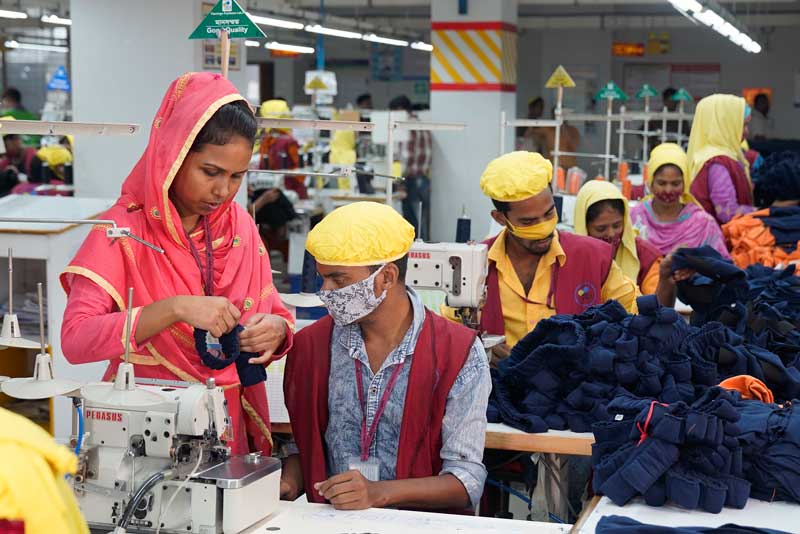By Savithri Rodrigo
Dhaka Bangladesh (Commonwealth Union)_The world’s second largest apparel exporter is ambitious; in 2022 it set for itself a target of gaining 10 percent of the global apparel market share by 2025 and an export target of USD 100 billion by 2030. But these goals are not set idly.
For years now, Bangladesh has been pushing boundaries with its apparel industry and just recently, a Bangladeshi readymade garment (RMG) factory notched itself as global leader in the Leed-certified green factory sector with the highest ever score of 104 in the industry category project in the world.

The country’s apparel industry has had its fair share of woes. The 2012 and 2013 apparel factory disasters which left more than 1,200 workers dead remain yet quite fresh in the international buyers’ minds.
But learning quickly from its shortcomings and with the government’s firm commitment to protect a vital conduit of the economy, Bangladesh instituted better labour regulations and safety conditions, added never before experienced investment incentives and aggressively marketed itself to leading global brands looking to diversify manufacturing locations. Today, the apparel industry which employs 4.4 million women accounts for 80 percent of its total export earnings and 11 percent of the country’s GDP.
The RMG industry is now on a firm footing. The radical transformation where safety and sustainability gained added focus now has about 200 totally green eco-friendly plants, in addition to international standards, regulations and guidelines being stringently adhered to. Automation and technological innovation are becoming centric to the industry’s future.
However, there still remains a pall which Bangladesh is trying desperately to shake off – it’s reputation as a low quality RMG destination. There is hesitancy in fair pricing and the loss of luxury brands in the wake of the Rana Plaza disaster, which are yet to return.
While there is some semblance of truth to this labeling, the industry is pushing the boundaries in the quality and efficiency of its labour force with upskilling, know-how and augmenting of international standards.
It began collaborating with the IFC on numerous sustainability platforms including the Partnership for Cleaner Textile (PaCT) working on the reduction of resource use including water and energy leading to improving operational efficiency and resource consumption. Another resource the IFC is working on are the 4.4 million women and for this, it collaborated with the industry on the the Gender Equality and Returns (GEAR) programme. This literally gears female sewing operators to take on supervisory roles by training them in soft and technical skills, while also promoting and supporting female talent in the workplace.
February 26, 2023







